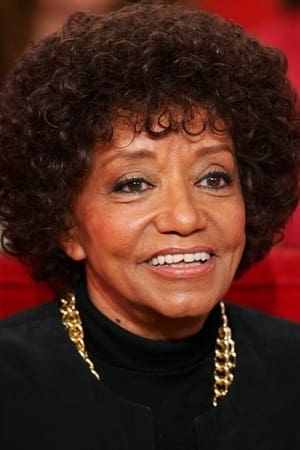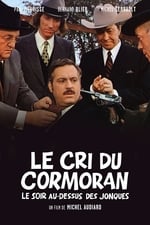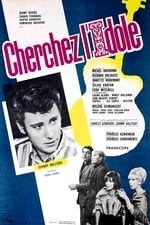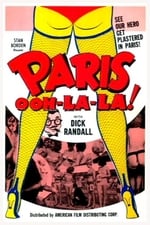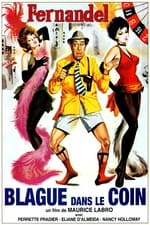Informacje osobiste
Znana/y z Aktor
Znana/y z czołówek 17
Płeć Kobieta
Data urodzenia 11 grudnia 1932
Data śmierci 28 sierpnia 2019 (86 years old)
Miejsce urodzenia Cleveland, Ohio, USA
Znany także jako
- Nancy Brown
Ocena treści
100
Wygląda całkiem dobrze!
Zaloguj się, aby zgłosić problem
Biografia
Nancy Holloway (née Brown, December 11, 1932 – August 28, 2019) was an American jazz, pop and soul singer and actress who was popular during the 1960s in France, where she continued to perform and live.
Born in Cleveland, Ohio, one of ten children of African American heritage, Nancy Brown attended East Technical High School and married when in her teens. The marriage was brief, but she retained her husband's surname of Holloway. She moved to New York City and took menial jobs before working as a dancer as part of the Beige Beauties troupe. In 1954, she traveled to Paris, France, and was persuaded to sing on stage at the Mars Club. Her performance was well received, and she became a regular performer, touring around Europe before returning to Paris. She began singing at the Moulin Rouge nightclub in 1959.
Encouraged by actor André Pousse, she made her debut appearance on French television in 1961 and released her first single, "Le Boogie du bébé" (a French cover of Buzz Clifford's "Baby Sittin' Boogie"). That year she opened her own nightclub, Chez Nancy Holloway, and appeared in her first film, Ballade pour un voyou. She became successful as a yé-yé style pop singer, uniquely attractive in France as "an American singer singing American songs specifically for the French market... with a distinctly American accent [that] only added to her charm." Further successful singles followed through the early and mid-1960s, including "Quand un garçon me plaît" (based on "Big Noise from Winnetka"), "Dernier baiser" (a version of "Sealed with a Kiss"), "Dum dum", "T'en vas pas comme ça" (an adaptation of "Don't Make Me Over"), "Fich’ le camp Jack" (a version of "Hit the Road Jack"), "Bye Bye" ("My Guy"), "Elle t’aime" ("She Loves You"), "Est-ce que tu m’aimes" ("Do You Love Me"), and "Dis-lui que je ne suis pas là", a duet with Nino Ferrer.
She appeared in several films in the early 1960s, including Le bluffeur, Cherchez l'idole, and Le gentleman de Cocody, and for a time her acting work overshadowed her singing career though she continued to record. She became a respected nightclub performer and appeared with such stars as Sammy Davis Jr., Quincy Jones, and Dizzy Gillespie. In 1969, her album Hello Dolly marked a shift towards show tunes. The death of her daughter led to a period of retirement, but she returned as a concert performer in the 1980s.
In later life she became an active supporter of AIDS charities. She retired from performing in 2008, and died in Paris in 2019, aged 86.
Source: Article "Nancy Holloway" from Wikipedia in English, licensed under CC-BY-SA 3.0.
Nancy Holloway (née Brown, December 11, 1932 – August 28, 2019) was an American jazz, pop and soul singer and actress who was popular during the 1960s in France, where she continued to perform and live.
Born in Cleveland, Ohio, one of ten children of African American heritage, Nancy Brown attended East Technical High School and married when in her teens. The marriage was brief, but she retained her husband's surname of Holloway. She moved to New York City and took menial jobs before working as a dancer as part of the Beige Beauties troupe. In 1954, she traveled to Paris, France, and was persuaded to sing on stage at the Mars Club. Her performance was well received, and she became a regular performer, touring around Europe before returning to Paris. She began singing at the Moulin Rouge nightclub in 1959.
Encouraged by actor André Pousse, she made her debut appearance on French television in 1961 and released her first single, "Le Boogie du bébé" (a French cover of Buzz Clifford's "Baby Sittin' Boogie"). That year she opened her own nightclub, Chez Nancy Holloway, and appeared in her first film, Ballade pour un voyou. She became successful as a yé-yé style pop singer, uniquely attractive in France as "an American singer singing American songs specifically for the French market... with a distinctly American accent [that] only added to her charm." Further successful singles followed through the early and mid-1960s, including "Quand un garçon me plaît" (based on "Big Noise from Winnetka"), "Dernier baiser" (a version of "Sealed with a Kiss"), "Dum dum", "T'en vas pas comme ça" (an adaptation of "Don't Make Me Over"), "Fich’ le camp Jack" (a version of "Hit the Road Jack"), "Bye Bye" ("My Guy"), "Elle t’aime" ("She Loves You"), "Est-ce que tu m’aimes" ("Do You Love Me"), and "Dis-lui que je ne suis pas là", a duet with Nino Ferrer.
She appeared in several films in the early 1960s, including Le bluffeur, Cherchez l'idole, and Le gentleman de Cocody, and for a time her acting work overshadowed her singing career though she continued to record. She became a respected nightclub performer and appeared with such stars as Sammy Davis Jr., Quincy Jones, and Dizzy Gillespie. In 1969, her album Hello Dolly marked a shift towards show tunes. The death of her daughter led to a period of retirement, but she returned as a concert performer in the 1980s.
In later life she became an active supporter of AIDS charities. She retired from performing in 2008, and died in Paris in 2019, aged 86.
Source: Article "Nancy Holloway" from Wikipedia in English, licensed under CC-BY-SA 3.0.
Aktor
|
|||||||||
|
|||||||||
|
|||||||||
|
|||||||||
|
|||||||||
|
|||||||||
|
|||||||||
|
|||||||||
|
|||||||||
|
|||||||||
|
|||||||||
|
